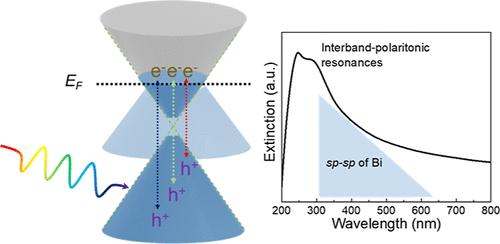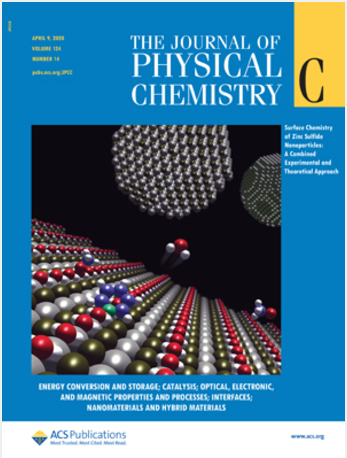Deciphering the Photocatalysis Mechanism of Semimetallic Bismuth Nanoparticles
IF 3.3
3区 化学
Q2 CHEMISTRY, PHYSICAL
引用次数: 0
Abstract
Metallic nanoparticle photocatalysts have been developed in various catalytic systems over the past few decades, including diverse noble and non-noble metals with plasmonic properties. The hot-carrier-induced mechanism is one of the most appealing pathways as it can provide energetic electrons or holes for driving thermodynamically unfavorable reactions or increasing the reaction rate. In this work, we evaluate the photocatalytic performance of semimetallic bismuth nanoparticles and offer detailed mechanistic interpretations in terms of hot carriers and interband transitions. The photocatalyzed nitrophenol reduction with sodium borohydride serves as a model reaction, and a wavelength-dependent study reveals the contribution of hot carriers. It is demonstrated that light irradiation under shorter wavelengths could produce deeper hot holes in bismuth nanoparticles, which can be quenched more effectively by hole scavengers, thus facilitating the electron-transfer process and resulting in larger apparent reaction rate constants. The observed photocatalysis enhancement accounts for the unique band structure with an extremely small band gap and exclusive interband absorption in the visible region. This proof-of-concept work offers a different perspective on the photocatalysis mechanism of bismuth nanoparticles and could help us better understand the role of hot carriers involved in photocatalysis, especially with interband transitions.

解密半金属铋纳米粒子的光催化机制
过去几十年来,在各种催化系统中开发了金属纳米粒子光催化剂,其中包括具有等离子特性的各种贵金属和非贵金属。热载流子诱导机制是最有吸引力的途径之一,因为它可以提供高能电子或空穴来驱动热力学上不利的反应或提高反应速率。在这项工作中,我们评估了半金属铋纳米粒子的光催化性能,并从热载流子和带间跃迁的角度提供了详细的机理解释。光催化硝基苯酚与硼氢化钠的还原反应是一个模型反应,波长依赖性研究揭示了热载流子的贡献。研究表明,较短波长的光照射可在铋纳米粒子中产生较深的热空穴,空穴清除剂可更有效地淬灭这些热空穴,从而促进电子转移过程,并导致较大的表观反应速率常数。所观察到的光催化增强是由于其独特的带状结构,具有极小的带隙和在可见光区域独有的带间吸收。这项概念验证工作为纳米铋粒子的光催化机理提供了一个不同的视角,有助于我们更好地理解热载流子在光催化中的作用,尤其是带间跃迁。
本文章由计算机程序翻译,如有差异,请以英文原文为准。
求助全文
约1分钟内获得全文
求助全文
来源期刊

The Journal of Physical Chemistry C
化学-材料科学:综合
CiteScore
6.50
自引率
8.10%
发文量
2047
审稿时长
1.8 months
期刊介绍:
The Journal of Physical Chemistry A/B/C is devoted to reporting new and original experimental and theoretical basic research of interest to physical chemists, biophysical chemists, and chemical physicists.
 求助内容:
求助内容: 应助结果提醒方式:
应助结果提醒方式:


